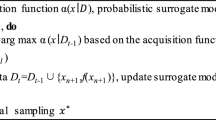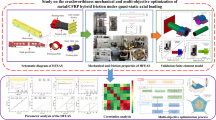Abstract
Failure mode and effect analysis has been generally applied to investigate the potential failures in systems, products, etc. Here, the bus body structure fabricating process is taken to assess the potential failure of a product and its effects. The failure mode of the bus body structure is analyzed based on the “Risk Priority Number (RPN)” which is the criteria to decide the risk priorities of the failure modes. Usually, the evaluation of RPN is based on the risk factors like “Severity(S), Occurrence (O), and Detection (D)”. To improve the failure mode analysis and ranking of bus body structure, a simulation technique i.e., fuzzy logic (FL) is proposed where the optimal RPN is achieved. With the goal of optimizing the generated rules based on the failure modes, hybrid teaching and learning-based optimization (TLBO) algorithm is presented with three distinctive metaheuristics updating behaviors. The optimal outcome demonstrates that the attained error rate between the output of desired and predicted values are firmly equivalent to zero. The proposed FL with hybrid TLBO achieves promising results in terms of the failure modes determination and risk prioritization.









Similar content being viewed by others
References
Ahire CP, Relkar AS (2012) Correlating failure mode and effect analysis & overall equipment effectiveness. J Procedia Eng 38:3482–3486
Almannai B, Greenough R, Kay J (2008) A decision support tool based on QFD and FMEA for the selection of manufacturing automation technologies. J Robot Comput Integr Manuf 24(4):501–507
Bhuvanesh Kumar M, Parameshwaran R (2018) Fuzzy integrated QFD, FMEA framework for the selection of lean tools in a manufacturing organisation. J Prod Plan Control 29:403
Bozdag E, Asan U, Soyer A, Serdarasan S (2015) Risk prioritization in failure mode and effects analysis using interval type-2 fuzzy sets. J Expert Syst Appl 42(8):4000–4015
Braaksma AJ, Klingenberg W, Veldman J (2013) Failure mode and effect analysis in asset maintenance: a multiple case study in the process industry. Int J Prod Res 51(4):1055–1071
Case K, Nor A, Teoh PC (2010) A diagnostic service tool using FMEA. Int J Comput Integr Manuf 23(7):640–654
Chanamool N, Naenna T (2016) Fuzzy FMEA application to improve decision-making process in an emergency department. J Appl Soft Comput 43:441–453
Chen LH, Ko WC (2009) Fuzzy linear programming models for new product design using QFD with FMEA. J Appl Math Model 33(2):633–647
Ji X, Ye H, Zhou J, Yin Y, Shen X (2017) An improved teaching-learning-based optimization algorithm and its application to a combinatorial optimization problem in foundry industry. J Appl Soft Comput 57:504–516
Jiang W, Xie C, Zhuang M, Tang Y (2017) Failure mode and effects analysis based on a novel fuzzy evidential method. J Appl Soft Comput 57:672–683
Kolich M (2014) Using failure mode and effects analysis to design a comfortable automotive driver seat. J Appl Ergon 45(4):1087–1096
Li R, Wu JF, Wang HY, Guo JY, Li GC (2014) Reliability assessment and failure analysis of lithium iron phosphate batteries. J Inform Sci 259:359–368
Liu SF, Cheng JH, Lee YL, Gau FR (2014) A case study on FMEA-based quality improvement of packaging designs in the TFT-LCD industry. Total Qual Managt Bus Excell 27(3–4):413–431
Liu HC, You JX, Lin QL, Li H (2015a) Risk assessment in system FMEA combining fuzzy weighted average with fuzzy decision-making trial and evaluation laboratory. Int J Comput Integr Manuf 28(7):701–714
Liu HC, You JX, You XY, Shan MM (2015b) A novel approach for failure mode and effects analysis using combination weighting and fuzzy VIKOR method. J Appl Soft Comput 28:579–588
Lolli F, Ishizaka A, Gamberini R, Rimini B, Messori M (2018) FlowSort-GDSS–a novel group multi-criteria decision support system for sorting problems with application to FMEA. J Expert Syst Appl 42(17–18):6342–6349
Mikos WL, Ferreira JC, Botura PE, Freitas LS (2011) A system for distributed sharing and reuse of design and manufacturing knowledge in the PFMEA domain using a description logics-based ontology. J Manuf Syst 30(3):133–143
Pazireh E, Sadeghi AH, Shokohyar S (2017) Analyzing the enhancement of production efficiency using FMEA through simulation-based optimization technique: a case study in apparel manufacturing. Cogent Eng 4(1):1284373
Peeters JFW, Basten RJI, Tinga T (2018) Improving failure analysis efficiency by combining FTA and FMEA in a recursive manner. Reliab Eng Syst Saf 172:36–44
Rafie M, Namin FS (2015) Prediction of subsidence risk by FMEA using artificial neural network and fuzzy inference system. Int J Min Sci Technol 25(4):655–663
Renu Rahul, Visotsky Darian, Knackstedt Stephan, Mocko Gregory, Summers Joshua D, Schulte Joerg (2016) A knowledge based FMEA to support identification and management of vehicle flexible component issues. Procedia CIRP 44:157–162
Shi JL, Wang YJ, Jin HH, Fan SJ, Ma QY, Zhou MJ (2016) A modified method for risk evaluation in failure mode and effects analysis. J Appl Sci Eng 19(2):177–186
Shinde RR, Shrivastava R, Morey RB (2015) Failure mode effect analysis-case study for bush manufacturing process. Int J Sci Eng Appl Sci (IJSEAS) 1(4):283–295
Teoh PC, Case K (2011) An evaluation of failure modes and effects analysis generation method for conceptual design. Int J Comput Integr Manuf 18(4):279–293
Thurnes CM, Zeihsel F, Visnepolschi S, Hallfell F (2015) Using TRIZ to invent failures–concept and application to go beyond traditional FMEA. J Procedia Eng 131:426–450
Varzakas Theodoros H, Arvanitoyannis Ioannis S (2007) Application of failure mode and effect analysis (FMEA), cause and effect analysis, and Pareto diagram in conjunction with HACCP to a corn curl manufacturing plant. Crit Rev Food Sci Nutr 47(4):363–387
Yousefi S, Alizadeh A, Hayati J (2018) Baghery M HSE risk prioritization using robust DEA-FMEA approach with undesirable outputs: a study of automotive parts industry in Iran. J Saf Sci 102:144–158
Funding
No funding.
Author information
Authors and Affiliations
Corresponding author
Ethics declarations
Conflict of interest
The authors declare that we have no conflict of interest.
Ethical approval
This article does not contain any studies with human participants performed by any of the authors.
Additional information
Communicated by V. Loia.
Publisher's Note
Springer Nature remains neutral with regard to jurisdictional claims in published maps and institutional affiliations.
Rights and permissions
About this article
Cite this article
Muthukumar, A., Krishnamurthy, K. Bus body manufacturing system via FEMA and fuzzy logic controller. Soft Comput 25, 3889–3901 (2021). https://doi.org/10.1007/s00500-020-05414-5
Published:
Issue Date:
DOI: https://doi.org/10.1007/s00500-020-05414-5




